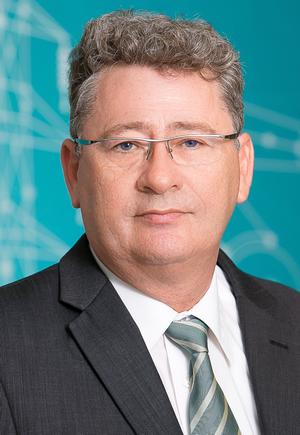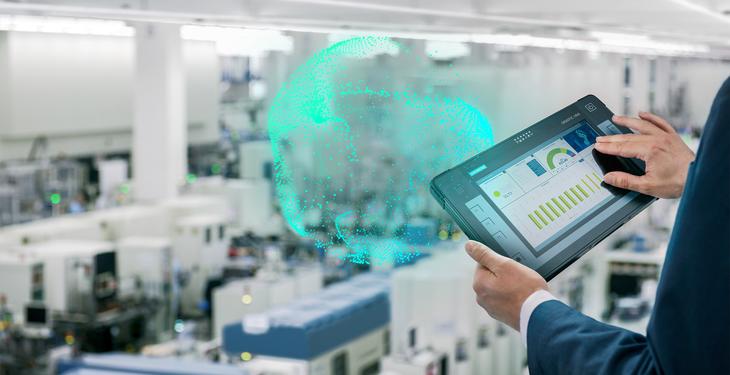In the near future, all companies must set their digital goals in order to remain competitive and relevant, considers Daniel Barciuc, Head of Digital Industries, Siemens Romania. The larger a company is, the more processes, equipment and resources will need to be considered, but in all cases the advantage of digitalization is closely linked to the losses generated by the time of production stoppage.
Dear Mr. Daniel Barciuc, what does a digital company mean in 2021?

A unique feature that digitalization introduces in the industry is the increased flexibility, the ability to simulate processes and improve them, but also to change certain product features in a short period of time, avoiding prolonged testing, errors and losses of raw material.
The more transparent the process and the easier it is to access data related to equipment productivity parameters, the more opportunities to improve and model production.
What do you anticipate will be a digital company in the near future, in 2025, for example?
The digitalization approach is carried out in several directions: processes, equipment, software and specialized human resources. Depending on the field of activity, one of these directions will precede. But in the coming years all companies must set their digital goals in all the above directions to remain competitive and relevant, both for their customers and partners and also for their employees.
The first essential step of the digital transformation is closely linked to the organizational culture and involves the continuous orientation towards the development of the team’s digital skills. Premature investment in equipment offers a lower success rate, in the absence of a digital culture and digital skills assessment, which acts as a catalyst in such projects.
Siemens has built a complete portfolio of digitization products and services in the industrial field, covering the entire value chain, from product design, production planning, equipment maintenance, execution, to services. What a company gains from a holistic approach to digitization is speed, flexibility, efficiency and quality in the production process.
How does the digital approach in process industries differ from ‘discrete’ industries?
It is important to understand that digitalization is personalized, depending on the process, but also on the objectives pursued. Therefore, the digitization strategy may differ from one production facility to another, within the same industry and even from one factory to another from the same manufacturer.
The main difference between the process industry and the “discrete” one is the life cycle, from product design to production and services. Therefore, Siemens introduced the notion of digital twin for the two industries, the customization being made based on the specific characteristics of the life cycle. Although the flow is different, the objectives are the same, regardless of the process, namely the integration of the digital world with the real one.
Where does the digitalization process begin for an energy company?
The first step in digitalizing an energy company is at the equipment level, which must be adapted to transmit information through sensors. It is an important stage, in which it is necessary to analyze what information is useful and what problems need to be addressed. Then we move on to the process management, monitoring stage. There are advanced smart metering and self-healing solutions for the energy networks implemented by the Digital Grid team.
The digital promise refers to an increasing productivity through automation, prevention, and rapid problem identification. How do the benefits of digitalization differ depending on the size of the company? What about depending on the business segment?
The larger a company is, the more processes, equipment and resources will need to be considered in the digitalization process. But in all cases, the advantage of digitalization is closely linked to the losses generated by the time of production stoppage. Depending on these costs, a company can only opt for monitoring, or for a complete digitalization, which also involves proactive maintenance, a flexibility of the production process and a customization of production for each product.
Siemens’ portfolio includes digital twins. What are these solutions?
Digital twin is a virtual replica of the production process, which involves the elimination of real development and testing processes that involve high costs and significant time. The simulation of production also has a positive impact on the environment, by significantly reducing CO2 emissions, but also waste. Equally important for the manufacturer is the identification and elimination of production defects, as well as the shortening of the launch time of a product on the market, as well as the increased possibilities for its customization.
Does industrial digitalization mean fewer people, other people or the same people, but trained to master new skills and competencies?
Digitalization in industry means fewer accidental shutdowns, advanced production by simulating the process and ensuring a constant stock of essential equipment. Human resources is moving to a new level of training and competence, with complex capabilities, both in hardware and software
How does Siemens get involved in training engineers adapted to 2021 technology?
The professional training starts from the student years, that’s why we support the universities by equipping laboratories by organizing internship programs. We also ensure the continuous training of specialists through annual regional trainings.
The company is currently running a digital training project in Austria and Germany through XR – Extended Reality, which aims to familiarize young apprentices at Siemens with technology. It comprises the three technologies: Virtual Reality (VR), Augmented Reality (AR) and Mixed Reality (MR) and has tremendous potential to create practical skills and ensure a complete foray into the complex universe of equipment and solutions in the Digital Industries portfolio.
